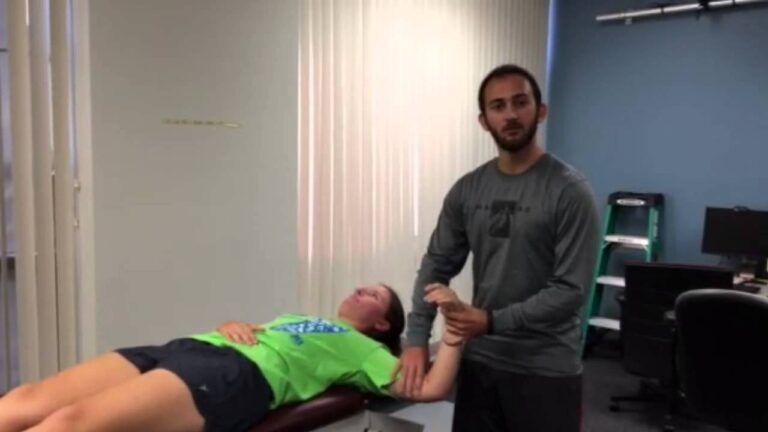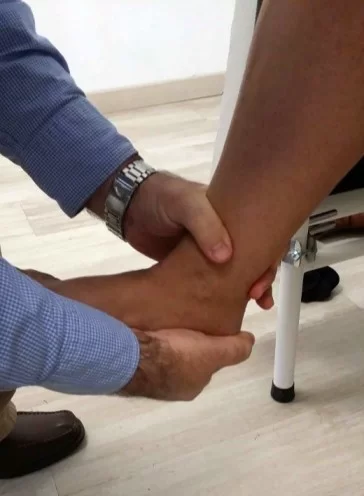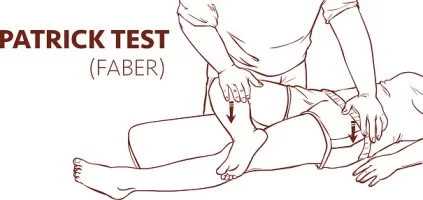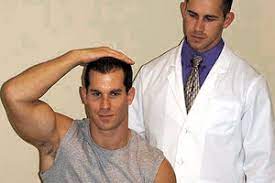Ege’s test :
This test is used to by doctor for check to meniscus injury .
This test is developed by to Dr. Ridvan Ege into 1968.
This test is also known as to weight-bearing McMurray test.
During this test put to weight on to patient knees.
Result is depending on to meniscus means to patient’s feet to turned outwards means lateral rotation give to medial meniscus injury or inwards Means medial rotation give to lateral meniscus.
This test is not useful in acute cases means less than to 6 weeks .
What is Purpose of this Ege’s test :
- This test is used to detect the Meniscus tear on to medial or lateral side of to knee.
- This test is help to doctor for to decided of to surgery is need or not when to meniscus tear is to suspected.
What is Technique of this test performance?
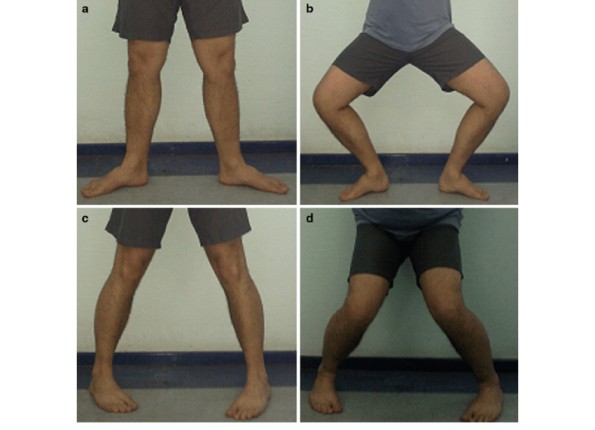
- Starting position of this test is standing position.
- Into standing position knees are into extension.
- Patient ‘s feet is 30-40cm means 11 to 15 inches away form to each other .
- Depending on to check of meniscus means medial or lateral do to rotation .
- For to check the medial meniscus put to patient’s feet in maximum external rotation means lateral rotation of to knee .
- For to check the lateral meniscus put to patient’s feet in maximum internal rotation means medial rotation of to knee .
Test Movement of this test :
- For to Medial meniscus tears patient is do to squats with to both lower legs into maximum external rotation means lateral rotation then to stands up slowly.
- After that increase to distance between to knees & do the external rotation means lateral rotation of each knee during to
- Squatting proceeds.
- After that perform to squat into maximum external rotation means lateral rotation so that genu varus is induced to knees point of to outward.
- Patient is do the squats as far as to possible & after that returns into starting position means extension of to knee .
- For to detect of to Lateral meniscus tear patient is hold to both lower extremities in maximum of internal rotation means medial rotation of to knee while up to patient is squats & stands up.
- Do the complete squat into maximum Internal rotation means medial rotation but it is rarely to possible, even for up to patient who have to healthy knees, therefore to patient is allow to steady of slightly less-than to maximum squat.
- In contrast of the medial meniscus test which is decreases to distance between of to knees are become to the external rotation means internally rotate as to in squat proceeds.
- By performing to squat into maximal internal rotation means medial rotation so that genu valgus is induced to knees point of inward.
- Patient id do the squats as far as possible & after that returns into starting position means extension of to knee.
What is result of this test ?
- The test is positive when to patient is do the complain of pain & click is at to related site of to joint line.
- Further squat is to stop to as soon as possible when to pain & click is to felt by to patient , because maximum squat is not to needed in all of to patients.
- Sometimes pain &click is not to be feel until to maximum squat & feel as to patient is comes out of to squat.
- In both of to condition this test is considered positive .
- Pain & click is typically felt at around to 90° of knee Flexion.
What is Issues of this test performance ?
- It is important to patient’s feet is stay in on to ground during this test.
- It is important to maintained the maximum rotation in throughout to squat
- These movements are not to fully performed even by to healthy people so that first it is important to care of this thing patient is not to perform the squat fully for to prevent of pain exacerbation.
- In this test patient is need to support so that use to treatment table.
- Anterior side meniscal tear is located to produce of to symptoms earlier of to knee flexion whereas tear is located on to posterior horn of to menisci which is produce by to symptoms into of deeper knee flexion.
What is Evidence of this test ?
| Effected side of knee | Accuracy of this test | Sensitivity of this test | Specificity of this test | Positive likelihood | Negative likelihood | Total % of to wrong predictions |
| Medial | 0,71 | 0,67 | 0,81 | 3,5 | 0,4 | 26% |
| Lateral | 0,84 | 0,64 | 0,90 | 5,3 | 0,5 | 21% |
- According to Akseki et al. this test is correlated with to arthroscopic findings of 0,341 kappa score.
- Akseki et al. is also compared to diagnostic values of to this test with to McMurray’s test & Joint line tenderness.
- But statistically significant differences is not to found between to three tests in to detecting of to meniscus tear ( p > 0,05).
- For medial meniscus tears, Ege’s test scored is better for to in accuracy, sensitivity & specificity.
- For to lateral meniscus tears Ege’s test is give to results superior to others.
- So that this test is more specific than to sensitive.
- Looking for to different types of to Meniscal tears, Akseki et al. is found to degenerative tears of to medial menisci ; it is missed in 66% means 8 of 12.
- Medial meniscal tear is diagnose correctly with to this test is in 84% of to cases bur compare only with to 61% of McMurray’s test.
- Similarly to this test is better at to diagnosis of longitudinal & bucket-handle of medial meniscal tear.
What is Clinical Bottom Line of this test ?
- Standard tests for to check the torn of meniscus is McMurray’s test & joint line tenderness (JLT).
- But this Ege’s test is not to possible to perform by to every patient with this meniscal injury because of in the test weight-bearing is to require.
- This test is also perform in keep into view for to balance & pain of to patient.

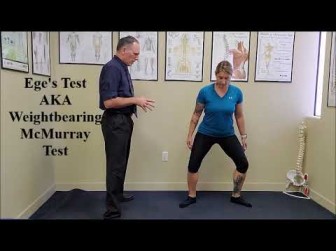
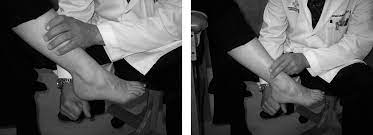
![Test for tight retinacular [ collateral ] ligaments.](https://mobilephysiotherapyclinic.in/wp-content/uploads/2022/02/test-for-tight-retinacular-ligaments.jpg)
